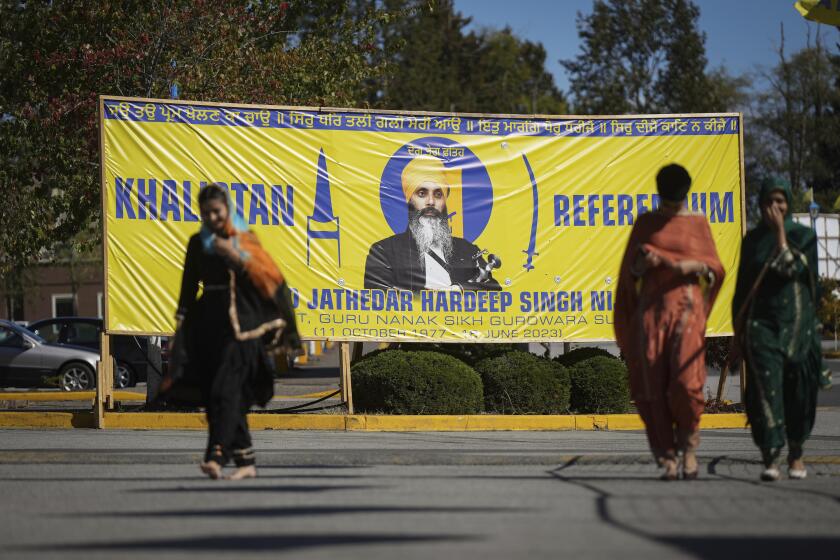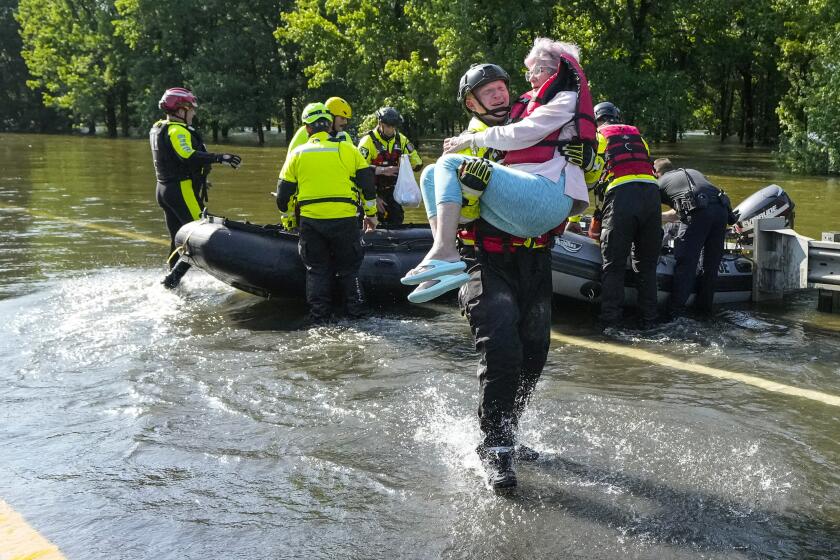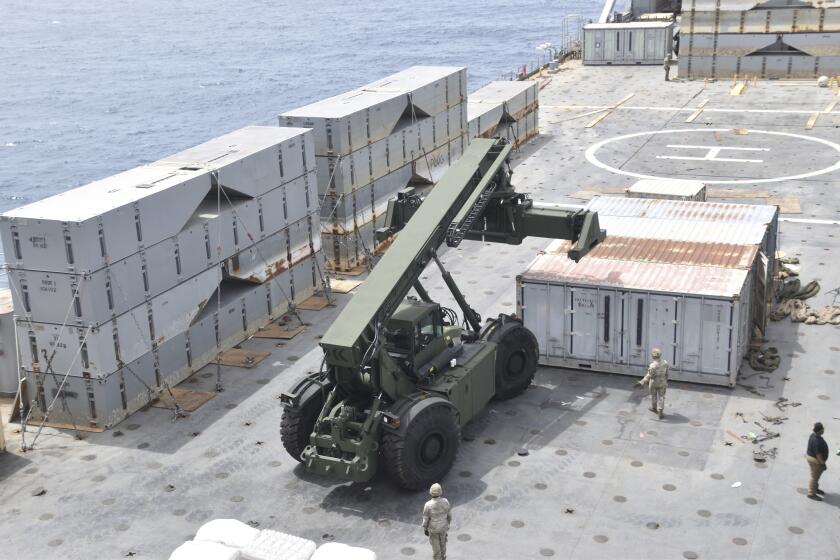Mood at Mine Growing Grimmer
Sofio Nava doubted there would be any good news Wednesday for the 65 coal miners trapped nearly a mile underground three days after an explosion blocked exits with tons of fallen dirt and rock.
Nava recalled that he was going home after working the day shift at a mine in nearby Muzquiz when an explosion trapped and killed 153 men on March 31, 1969.
“I never went back into a mine after that,” he said.
He told his story to pass the time in the long hours waiting for officials to announce Wednesday afternoon that they had made little progress reaching the two miners closest to the mine entrance.
Rescue workers, stymied by new cave-ins and high levels of methane gas, were still about 50 yards from the conveyer belt where the pair had been working, mine officials said. The miners have been missing since 2:30 a.m. Sunday.
Mexican Labor Secretary Francisco Salazar and mine superintendent Ruben Escudero stood behind an iron fence, flanked by soldiers, to give their briefing after hundreds of angry relatives had jeered them Tuesday.
“How many are alive?” shouted one man, then another.
“Our hope is that all are alive,” Escudero said. “But it’s not in our power to say.”
Officials said four U.S. mining experts had arrived.
Family members, who had earlier banged on the steel entrance gates with rocks to demand an update, returned numbly to wait on plastic chairs under awnings and makeshift tents.
Leila Hernandez Fabian, 29, is waiting for her father, Ignacio Hernandez Lopez. So are the miner’s wife, two other children and eight grandchildren. Her parents grew up and married in Nueva Rosita, a nearby pueblo, she said, and her father had been working in the mines since she was a child. “He always said he was afraid of the gas,” she said.
Nava said he was a typical young man from the state of Coahuila when he entered his first coal mine on June 23, 1959. “I was [about] 19 years old,” he recalled. “You have to be fearless to work these mines, and I was young.”
The 67-year-old man told his story somberly, his deeply lined face shaded by a cowboy hat as he stood among the several hundred people who have waited day and night by the entrance to the mining facility.
This is mining country, he said, and many of the boys he grew up with ended up working underground.
Local experts say the northern state produces more than 13 million tons a year of coal used to fuel the furnaces of steel factories, as well as provide about 14% of Mexico’s electricity at a local coal-powered plant.
The pay wasn’t great, Nava said, “but everything was cheap back then. A little bit of money went a long way.”
But after working 10 years, he said, he saw firsthand what a small explosion could do. A friend was drilling when a blast of gas pelted him with dirt and bits of coal.
“He was all cut up,” Nava said.
Then two months later came the explosion at the Barroteran mines No. 2 and No. 3 that prompted him to quit.
“You can think you have a lot of courage,” he said, “but when you’re underground the fear can grab you.”
*
Carlos Martinez in The Times’ Mexico City Bureau contributed to this report.
More to Read
Start your day right
Sign up for Essential California for news, features and recommendations from the L.A. Times and beyond in your inbox six days a week.
You may occasionally receive promotional content from the Los Angeles Times.






